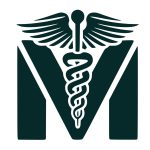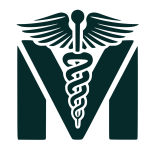Treatment
Bone Cancer
What is Bone Cancer?
Types of Primary Bone Cancer
- Osteosarcoma
- Most common primary malignant bone tumor (35%).
- Peak age: Adolescents/young adults (10–30 yrs); second peak >60 yrs.
- Locations: Metaphyses of long bones (knee, shoulder, hip).
- Subtypes: Conventional (high-grade), telangiectatic, parosteal (low-grade).
- Chondrosarcoma
- 2nd most common (25–30%); arises from cartilage.
- Peak age: Adults >40 yrs.
- Locations: Pelvis, femur, humerus, ribs.
- Grades I–III: Low-grade (slow-growing) vs. high-grade (aggressive).
- Ewing Sarcoma
- 10–15% of primary bone cancers.
- Peak age: Children/teens (5–20 yrs).
- Locations: Diaphyses of long bones, pelvis, ribs.
- Key feature: Chromosomal translocation t(11;22).
- Rare Types
- Chordoma: Spine/skull base (notochord remnant).
- Giant Cell Tumor of Bone: Locally aggressive (may metastasize).
- Malignant Fibrous Histiocytoma (MFH)/Undifferentiated Pleomorphic Sarcoma (UPS).
Metastatic Bone Cancer
- 20–50× more common than primary bone cancer.
- Common primaries: Breast, prostate, lung, kidney, thyroid.
- Presentation: Bone pain, fractures, hypercalcemia.
Common Symptoms:
- Persistent bone pain (worsens at night or with activity).
- Swelling/tenderness near a joint.
- Pathological fracture (bone breaks from minor injury).
- Systemic: Weight loss, fatigue (advanced disease).

Risk Factors
- Genetic Syndromes:
- Li-Fraumeni (TP53), Hereditary RB (RB1), Paget’s disease of bone.
- Radiation Exposure: Prior therapeutic radiation.
- Bone Marrow Transplant: ↑ Risk of osteosarcoma.
- Age: Osteosarcoma/Ewing (teens/young adults); chondrosarcoma (older adults).
Diagnosis
- Imaging:
- X-ray: Initial study (shows “moth-eaten” bone destruction, periosteal reaction).
- MRI: Defines tumor extent in bone/soft tissue.
- CT/PET-CT: Staging (chest CT for lung mets; PET for systemic spread).
- Bone Scan: Detects multifocal disease.
- Biopsy:
- Critical for diagnosis. Done by an interventional radiologist or orthopedic oncologist to avoid contamination.
- Lab Tests:
- Alkaline phosphatase (↑ in osteosarcoma), LDH (prognostic in Ewing).
Treatment Options:
- Surgery:
- Limb-sparing resection:Remove tumor + margin of healthy tissue; reconstruct with prosthesis/graft.
- Amputation:Needed if the tumor involves nerves/vessels.
- Chemotherapy:
- Osteosarcoma/Ewing:Neoadjuvant (pre-surgery) + adjuvant (post-surgery).
- Regimens:MAP (methotrexate/doxorubicin/cisplatin) for osteosarcoma; VDC/IE (vincristine/doxorubicin/cyclophosphamide + ifosfamide/etoposide) for Ewing.
- Chondrosarcoma:Chemoresistant (used only in advanced dedifferentiated types).
- Radiation Therapy:
- Ewing sarcoma: Radiosensitive; used for unresectable sites (pelvis/spine).
- Chordoma: Proton beam therapy (skull base/sacrum).
- Targeted Therapies & Immunotherapy:
- Denosumab (for giant cell tumor).
- Clinical trials: TKIs, mTOR inhibitors, checkpoint inhibitors.
Prognosis
| Tumor Type | 5-Year Survival | Key Prognostic Factors |
| Localized Osteosarcoma | 60–75% | Good response to chemo, limb location |
| Metastatic Osteosarcoma | <30% | Lung mets, poor chemo response |
| Chondrosarcoma (Low-Grade) | >90% | Grade, resectability |
| Chondrosarcoma (High-Grade) | 30–50% | |
| Localized Ewing Sarcoma | 70–80% | Pelvic site, large size, chemo response |


